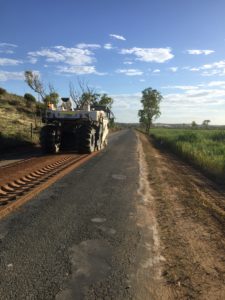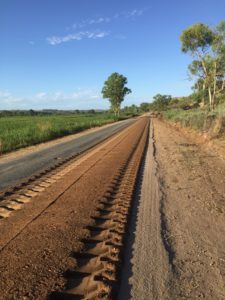Stabilco provides soil and pavement stabilisation, saving time and money, and improving the strength, durability and consistency of the sub-grade and pavement.
Our specialised equipment can present a 50% water saving from conventional methods of Wet Mixing.
- Cost effective solutions
- High production rates improve construction schedules
- Re-using existing pavement increases sustainability
- Reduce reliance on importing materials to site
Stabilisation transforms an unsuitable material into a product that conforms to Australian Standards for pavement material. This is achieved by the introduction of an additional material to the existing pavement material. The additional material is normally a single binder or a combination of binders, such as cement, lime, blended cements, bitumen, Polymers or Enzymes. The end result being a high class product which generates no landfill and alleviates the demands on quarry products, reducing the Carbon Footprint.
Compared to traditional processes, stabilisation is environmentally and economically viable, with the re-use of existing pavement materials, reducing landfill and demands on quarry resources.
Environmental Benefits
- Helps preserve natural resources
- Reduces the need for landfill
- Rapid rehabilitation of pavements, reducing disruption to traffic and improving road safety
- Insitu recycling reduces haulage of road-making materials, with subsequent reduction in wear and tear on the road network and thus less vehicle emissions, reducing the Carbon Footprint.
- Protects the natural heritage through reduction in the number of gravel pits required
- Reduces greenhouse gases and construction energy use
- Increases safety and reduces erosion, dust and environmental problems when used for dust suppression on unsealed roads
Economical Benefits
- Drastically reduces construction time and lane closures
- Construction costs reduced with less material inputs, raw material transport and energy use
- Sub-grade improvement in greenfield sites to long term strength gains and wet weather construction access
- Improves the wearing characteristics of unsealed pavement
- Relatively low cost technique for providing temporary works such as access tracks and haul roads
- Cost effective techniques for maintenance and rehabilitation of existing roads


